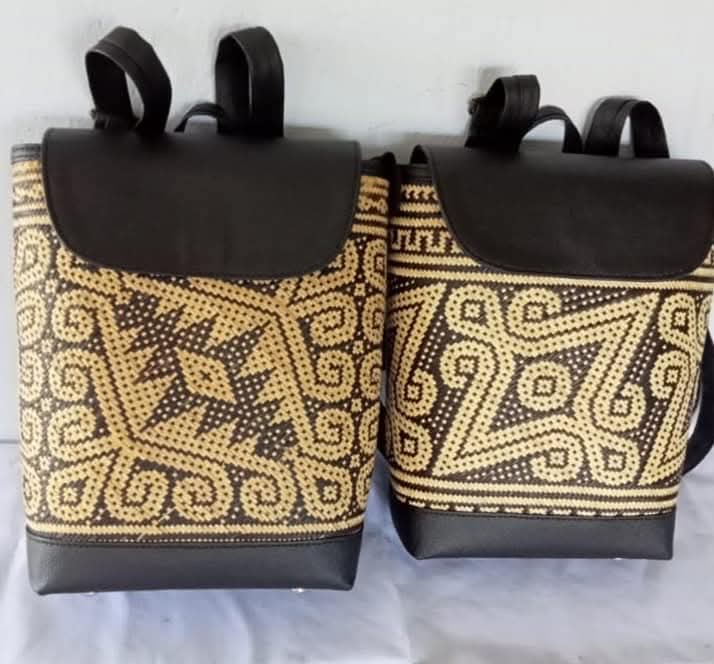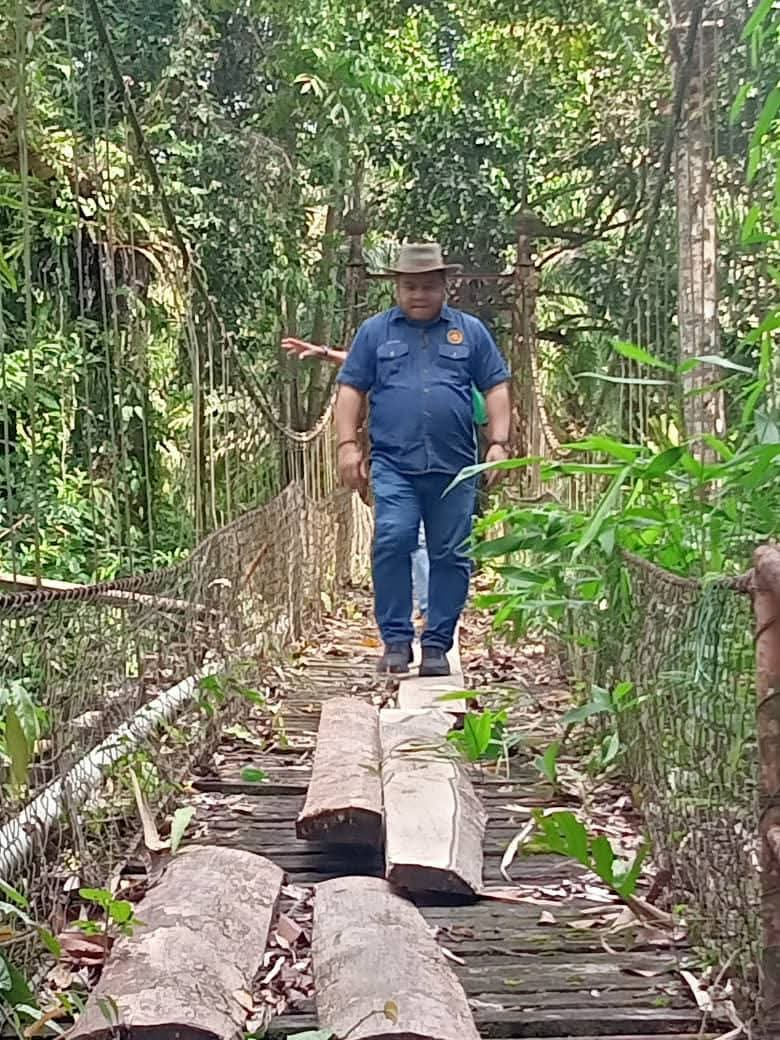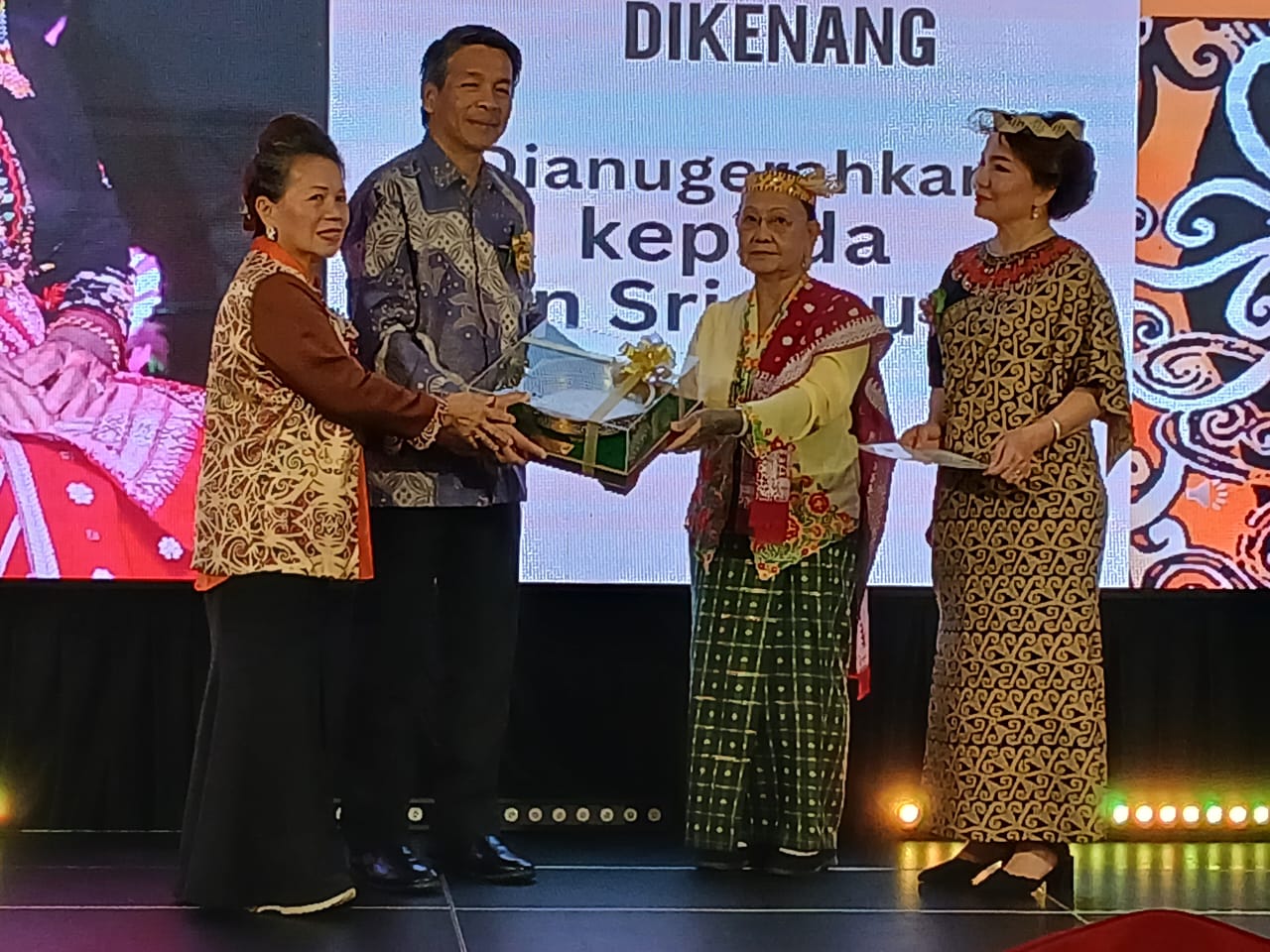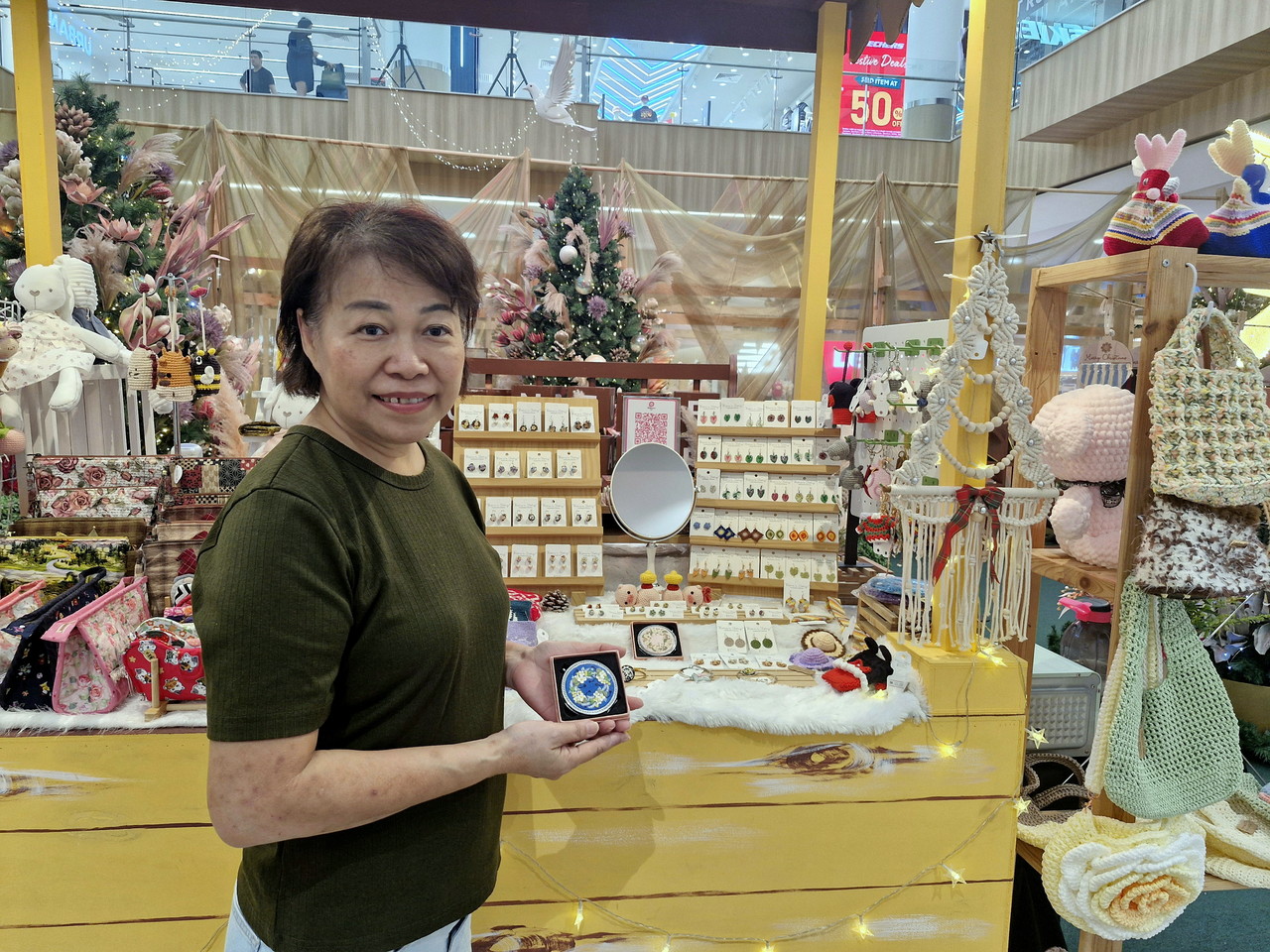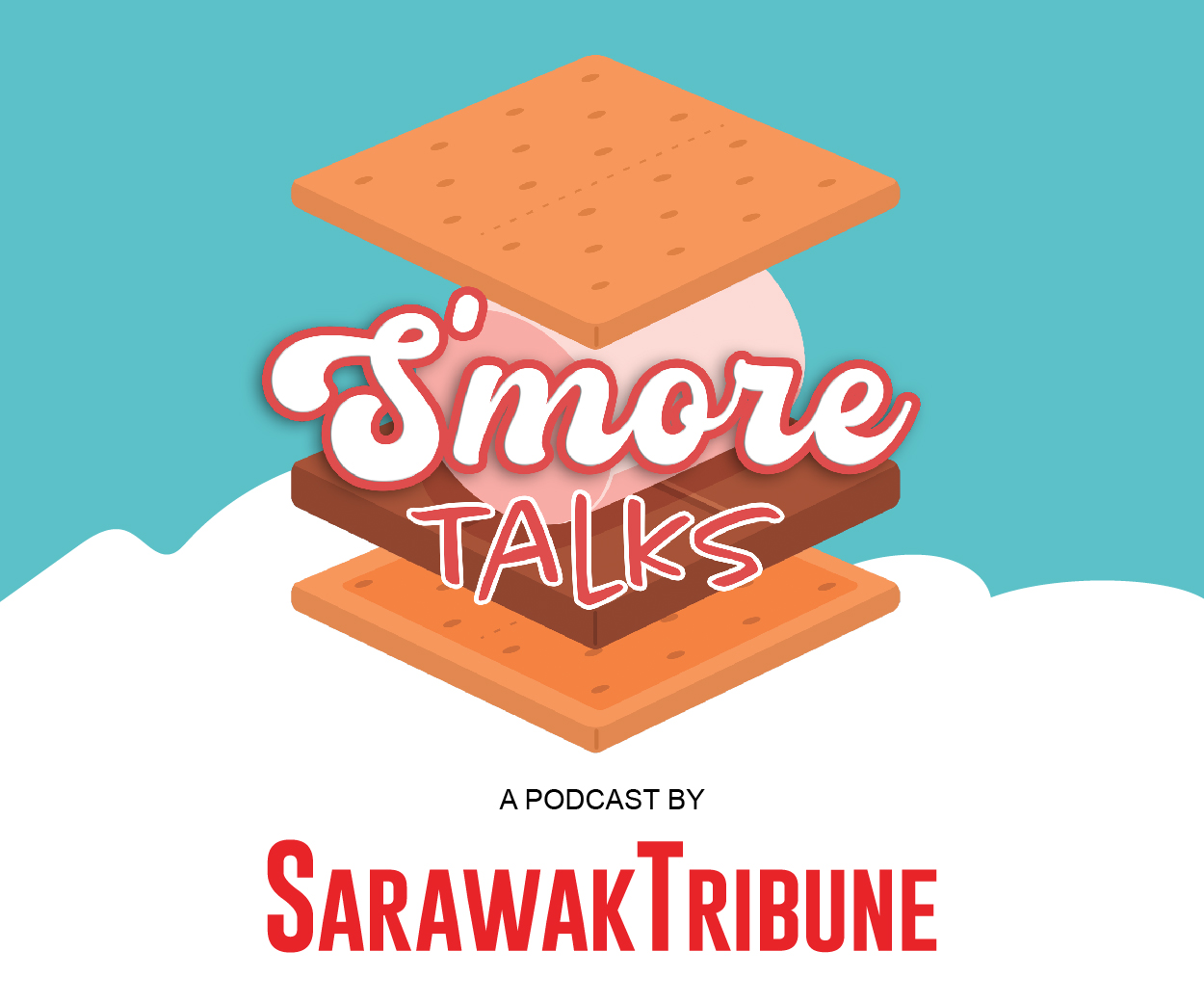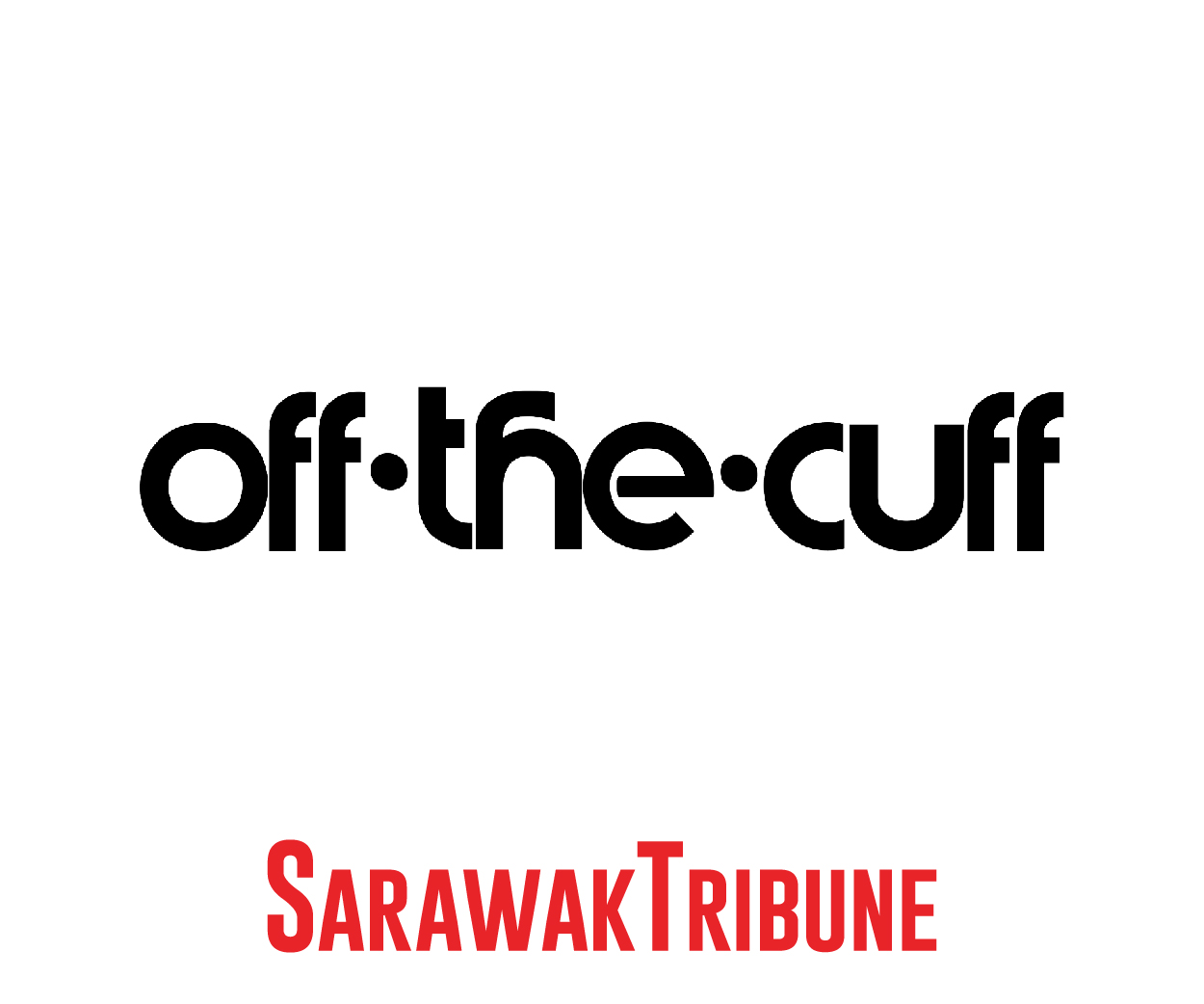PART 1
A quiet cultural revival in Sarawak
WHILE Sarawak advances rapidly in green energy and digital transformation, a quieter yet equally important movement is taking shape within the Dayak community.
This is a cultural revival led by artisans, mostly women, whose craftsmanship in beads, rattan, and woven textiles preserves heritage while opening new economic opportunities.
For individuals like Julia Livan Talek and Riong Gimang, traditional crafts are more than artistry; they are vital acts of cultural continuity and empowerment.
Their dedication not only safeguards ancestral knowledge but also nurtures creativity and entrepreneurship that can inspire future generations.
From hobby to heritage business
Julia Livan Talek, 52, is the founder of Eda Beran, a brand born from her deep admiration for the cultural arts of the Orang Ulu, particularly the Kayan.
Hailing from the longhouse of Uma Juman in Asap, Belaga, Julia began her journey into traditional craftwork seven years ago.
“I have always been very interested in the arts, especially beads and rattan products.
“I used to make accessories and bags for myself. When I went out wearing them, people would ask where I got them. Then they started asking if I could make one for them too,” she said.
That demand inspired Julia to turn her hobby into a business. She began modernising traditional designs to suit contemporary tastes, blending heritage with utility.
“Some traditional items, like baby carriers or baskets, are not practical for everyday use. So, I improvise. I add linings, better handles, and modern features. Some bags can even be used for dinner events or casual outings,” she added.
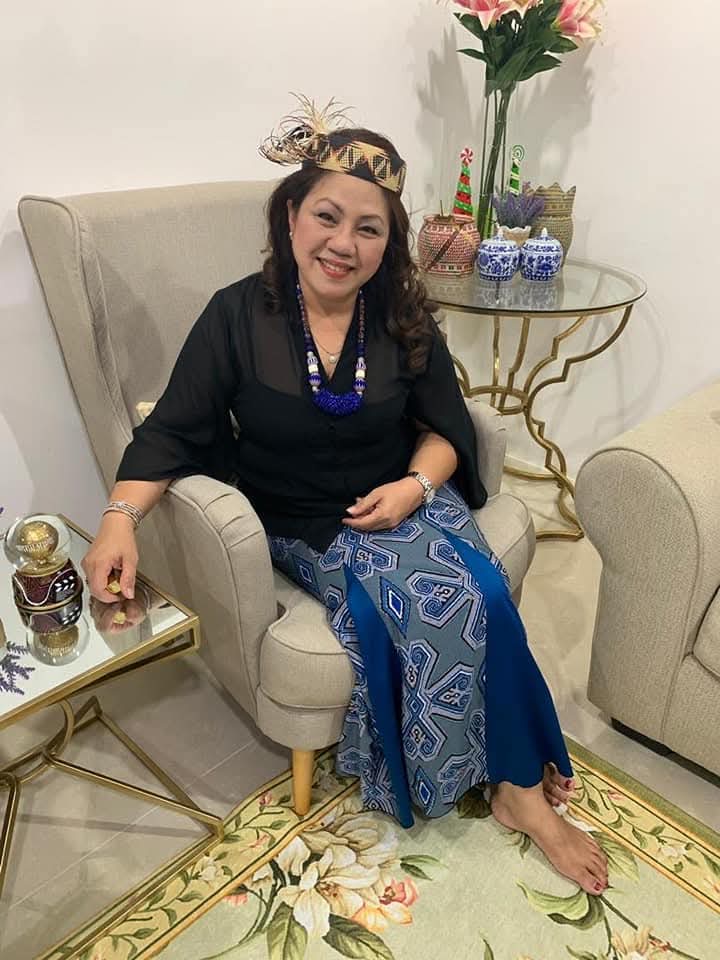
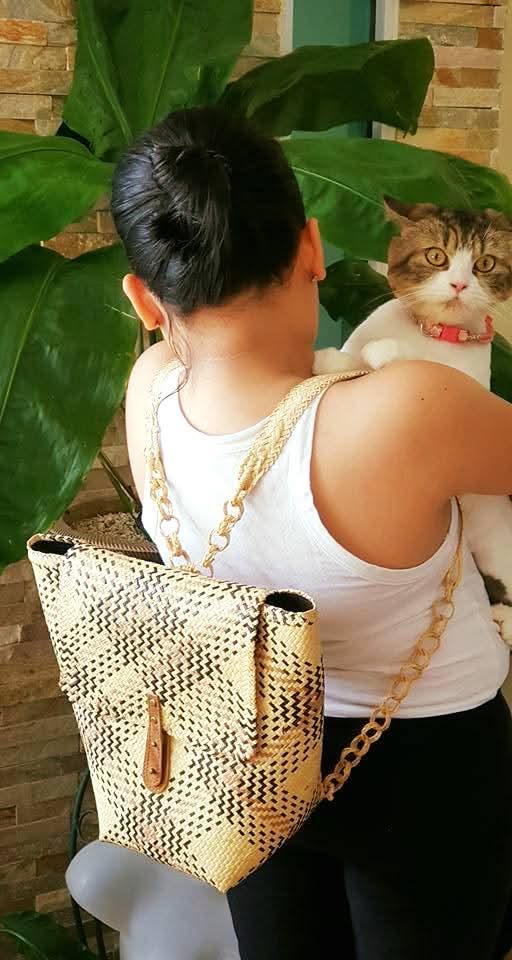
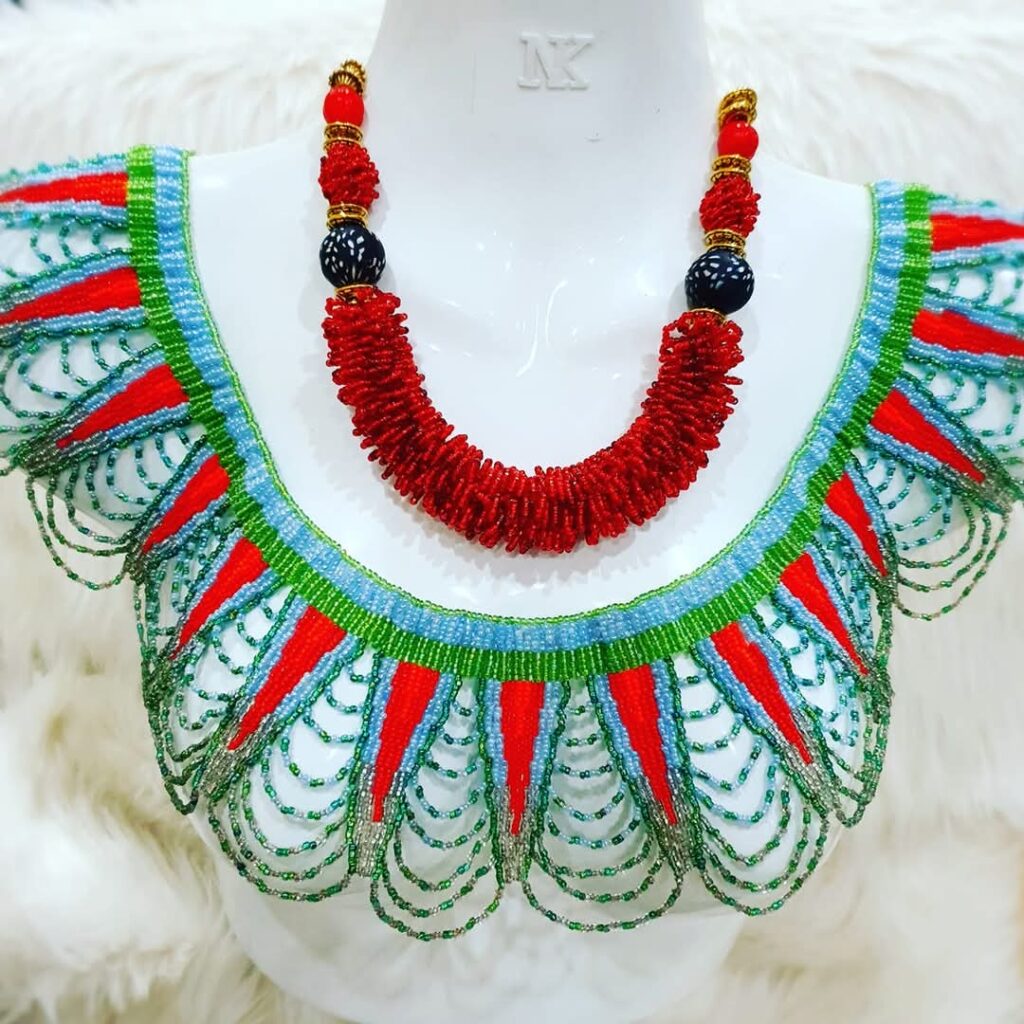
Crafting contemporary Dayak elegance
Julia’s products include handbags, rattan accessories, and beadwork jewellery. Crafting a single rattan bag typically requires a full day of meticulous work, while those adorned with intricate beadwork may demand up to a week to complete.
Her jewellery pieces, particularly those involving wirework, are delicate and time-consuming, sometimes requiring several days to complete.
Sourcing quality materials is part of her creative process.
“Most of the beads I use are Indonesian glass beads and Japanese beads manufacturers like Toho and Matsuno. They are high quality. I do not use beads from China.
“The local ceramic beads are fragile, and I only use them if a design specifically calls for it,” she explained.
Julia designs most of her patterns and motifs.
“I maintain traditional Orang Ulu motifs but design them in such a way that modern customers can relate to and wear them. Even though it is rattan, I shape it so that it becomes fashionable,” she added.

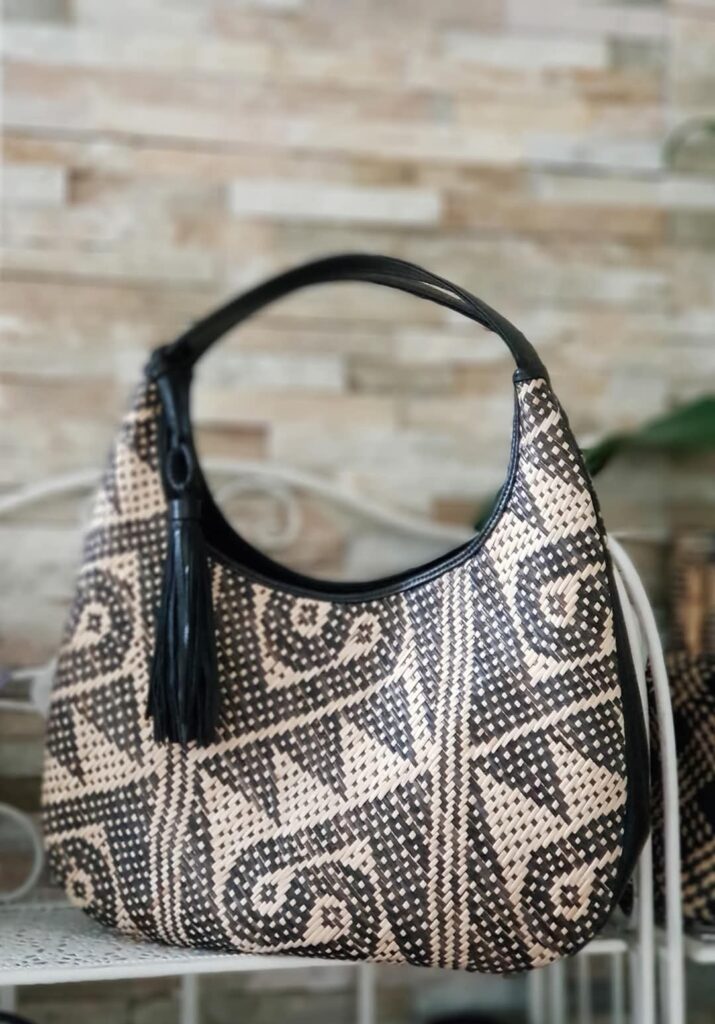
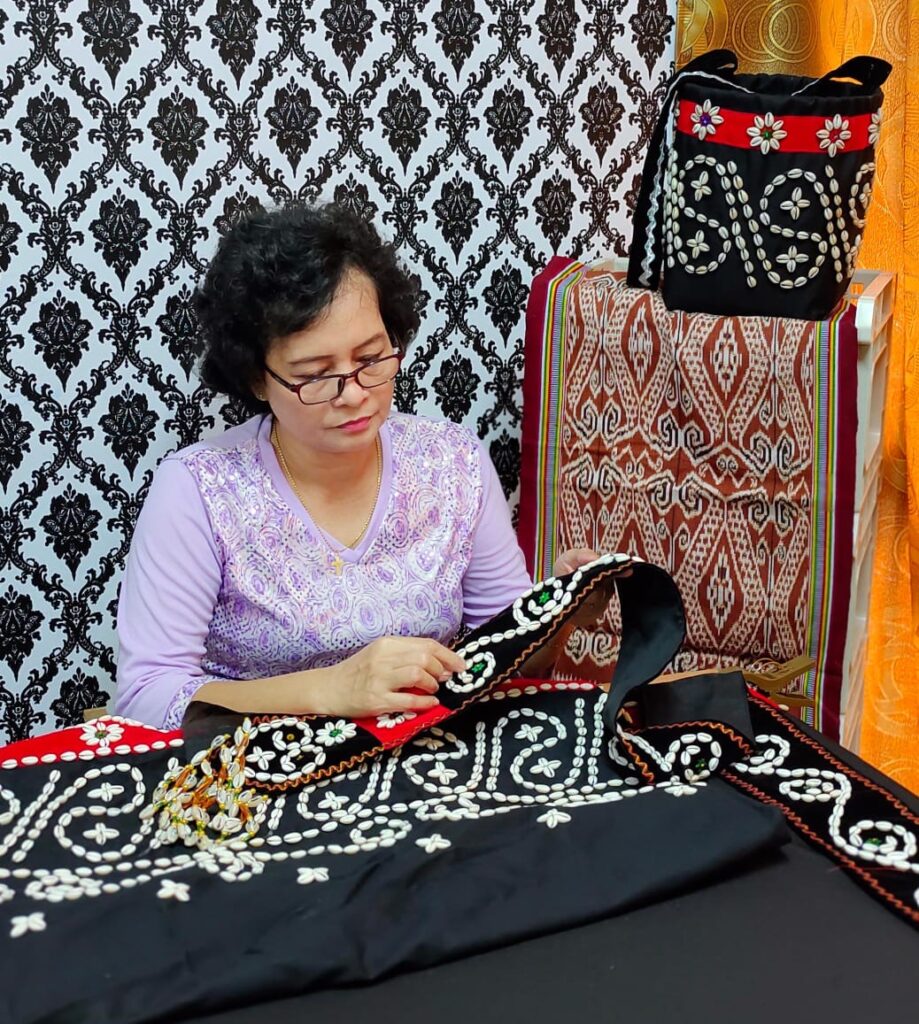
Selling culture one piece at a time
Her brand markets primarily through social media and word of mouth.
“Most of my customers are Sarawakians who live outside the state. They buy my products to bring back as souvenirs. That is why I design some items like earrings or pendants with shells and beads that are light and easy to carry,” Julia said.
Her work has reached international audiences, including participation in a Singapore showcase organised by the Sarawak Trade and Tourism Office.
However, she explained the difficulties of the consignment model used by organisers.
“We have to pay for insurance and shipping, and if our products do not sell, they just sit there. Some of my products have been in Singapore for more than three years.
“They should have bought the items from us and sold them there instead of asking small crafters to bear the burden,” she shared.
She also raised concerns about high booth rental costs at major events.
“One booth at the Rainforest World Music Festival can cost RM3,000. When you are selling earrings at RM20 or bangles at RM15, it is hard to break even,” she lamented.

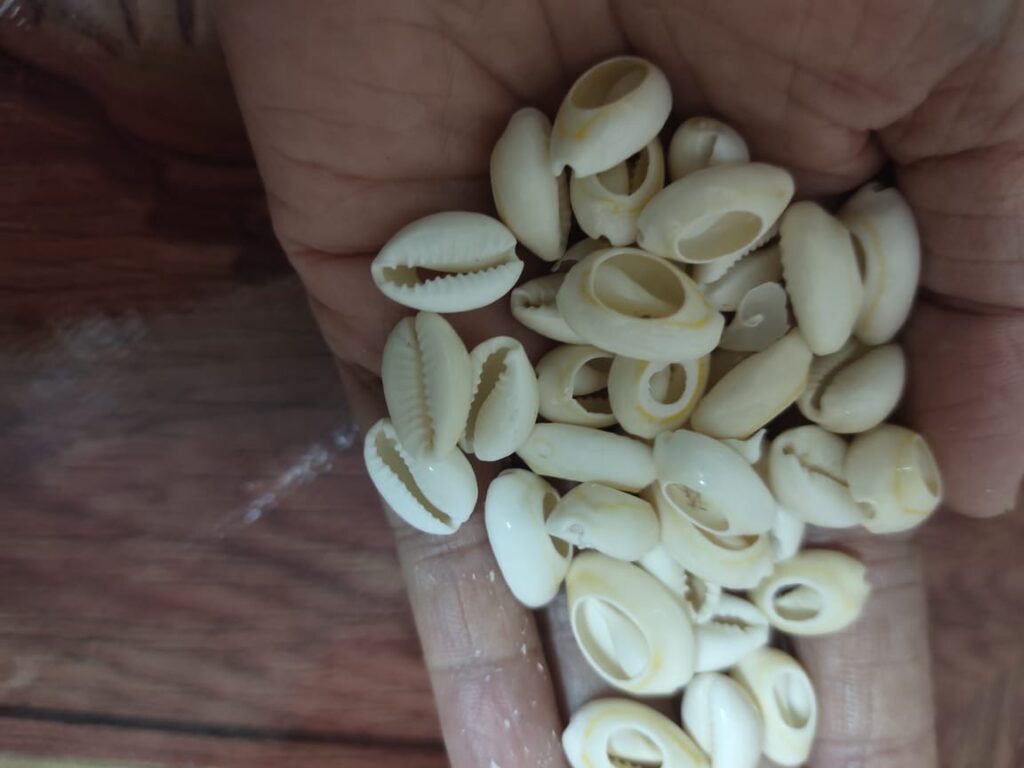
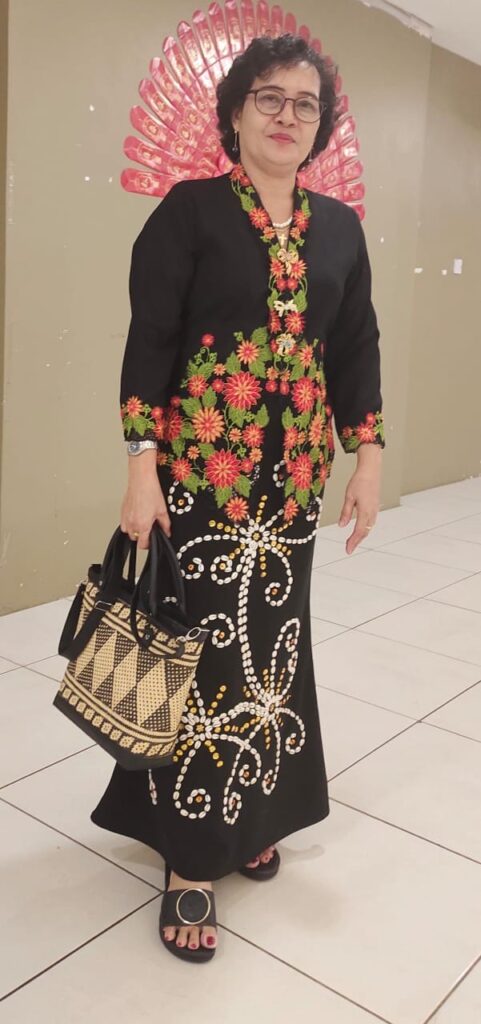
Protecting original designs
Despite the challenges, Julia is determined to stay true to her craft. She is particularly concerned about the growing misuse of traditional designs.
“People cannot differentiate between Iban and Orang Ulu motifs anymore. They mix everything without knowing the background.
“In the past, specific motifs were reserved for individuals of particular status, such as members of royal families or nobility like the ‘panjin’. Now, everyone uses everything without understanding,” she said.
She believes more needs to be done to educate the public.
“Even rattan from different areas like Murum or Miri has different qualities. Indonesian rattan is also a major competitor. We know the differences, but customers often do not. More platforms are needed to educate people,” she added.
Julia advises aspiring Dayak entrepreneurs to focus on originality.
“Many people duplicate my work and sell it at a lower price, but my customers know the difference. Handmade items are more than products. You are buying someone’s time, their artistry, their culture,” she explained.
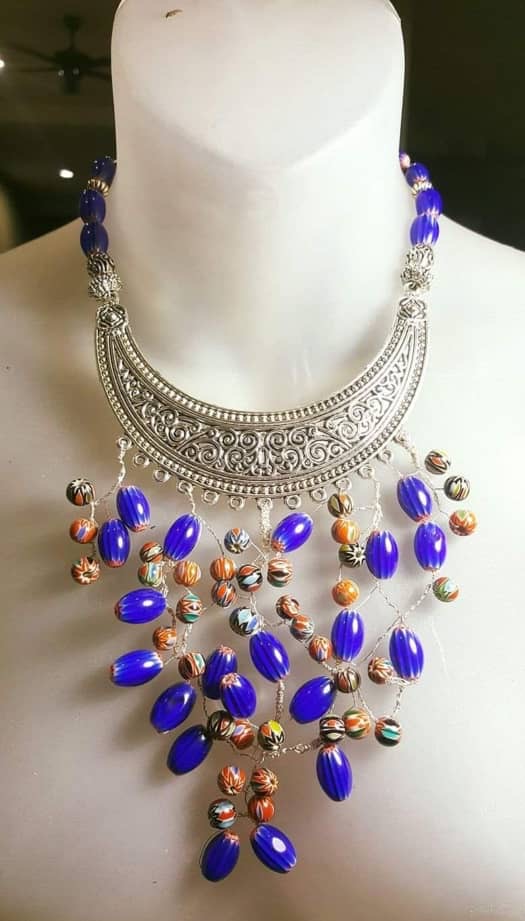
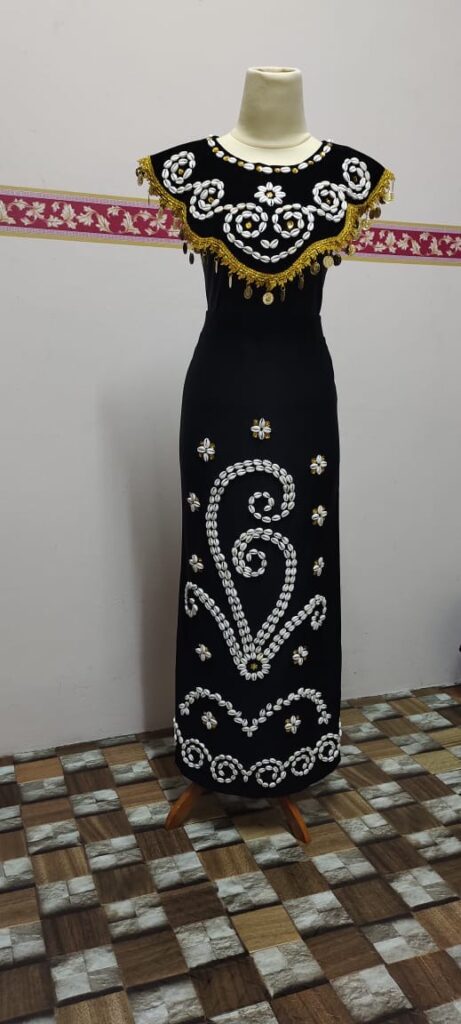

Reviving ‘kain buri’ with heart and hands
Riong Gimang, a fellow Dayak artisan and the founder of Mmak Ata Enterprise, shares a similar journey of heritage preservation through her craft.
Riong specialises in the intricate art of ‘kain buri’, a textile rich in history, symbolism, and traditional technique.
She also began her journey seven years ago, sparked by photos of the fabric she saw on social media.
“I started learning how to make ‘kain buri’ because it is part of our community’s culture and tradition,” she said.
“My interest grew when I saw the uniqueness and artistic value in each pattern and carving. I wanted to understand it deeply, so I learned through hands-on experience.”
A fading art form faces modern pressures
Mastering ‘kain buri’ took years of dedication.
“This art requires precision, patience, and a deep understanding of the techniques and meanings behind the designs. Each motif often represents something from nature, such as flora and fauna.
“Some symbolise prosperity or well-being in the community,” she explained.
However, preserving ‘kain buri’ has proven difficult.
“There are only a few people left in my community who know how to do it. The older generation still practises it, but younger people are losing interest. They are more drawn to modern careers like technology and fashion.” she said.
Riong also pointed out how raw materials have become harder to obtain.
“Certain types of seashells used in ‘kain buri’ must now be imported because they are no longer available in Sarawak. This increases costs and limits our ability to produce,” she shared.
Despite the decline in popularity, there is still interest in her work.
“There is demand, especially among collectors and those who appreciate traditional art. But the challenge is to meet market standards while staying true to our roots,” he added.
Innovation through cultural integrity
Riong believes in integrating tradition with innovation.
“We can combine traditional patterns with modern design elements to attract a wider audience. But education and exposure are vital. More workshops and training are needed to raise awareness and encourage the younger generation,” she said.
She also touched on the limited support available for urban artisans.
“Corporate social responsibility programmes like the ones by SEB do help longhouse communities, but we in cities are often excluded.
“Most support goes to crafters from Bakun or Murum, who are sponsored to attend events like Hari Kraft Kebangsaan in Kuala Lumpur. Meanwhile, we are left to pay for everything ourselves,” she added.
Riong says exhibitions, training, and promotional efforts should be extended to more groups.
“With proper support and promotion, the art of ‘kain buri’ can survive. It can even thrive if people see its value,” she said.
Empowerment through authenticity
Both Julia and Riong agree that traditional crafts play an essential role in preserving indigenous identity.
“Each design tells a story. Each item holds a piece of who we are,” they shared.
“But it is more than preservation. This is also about survival, about giving ourselves and our children a future that is rooted in our culture,” Julia said.
Their work highlights how cultural heritage, when placed at the centre of economic development, can empower communities without sacrificing tradition.
With continued advocacy, education, and support, artisans like Julia and Riong are proving that Dayak culture is not fading. It is evolving, one bead, one thread, and one rattan weave at a time.
Connecting tradition to tomorrow’s innovation
The spirit of culturally rooted entrepreneurship also resonates with Sarawakian talent abroad, including Franklin Lingga Abun, the first young Sarawakian to be accepted into BMW’s global engineering programme.
His remarkable journey from rural Sarawak to Europe’s automotive innovation sector is a testament to how tradition and modernity can together propel Sarawak onto the world stage.
Franklin’s inspiring story is explored in Part 2.



